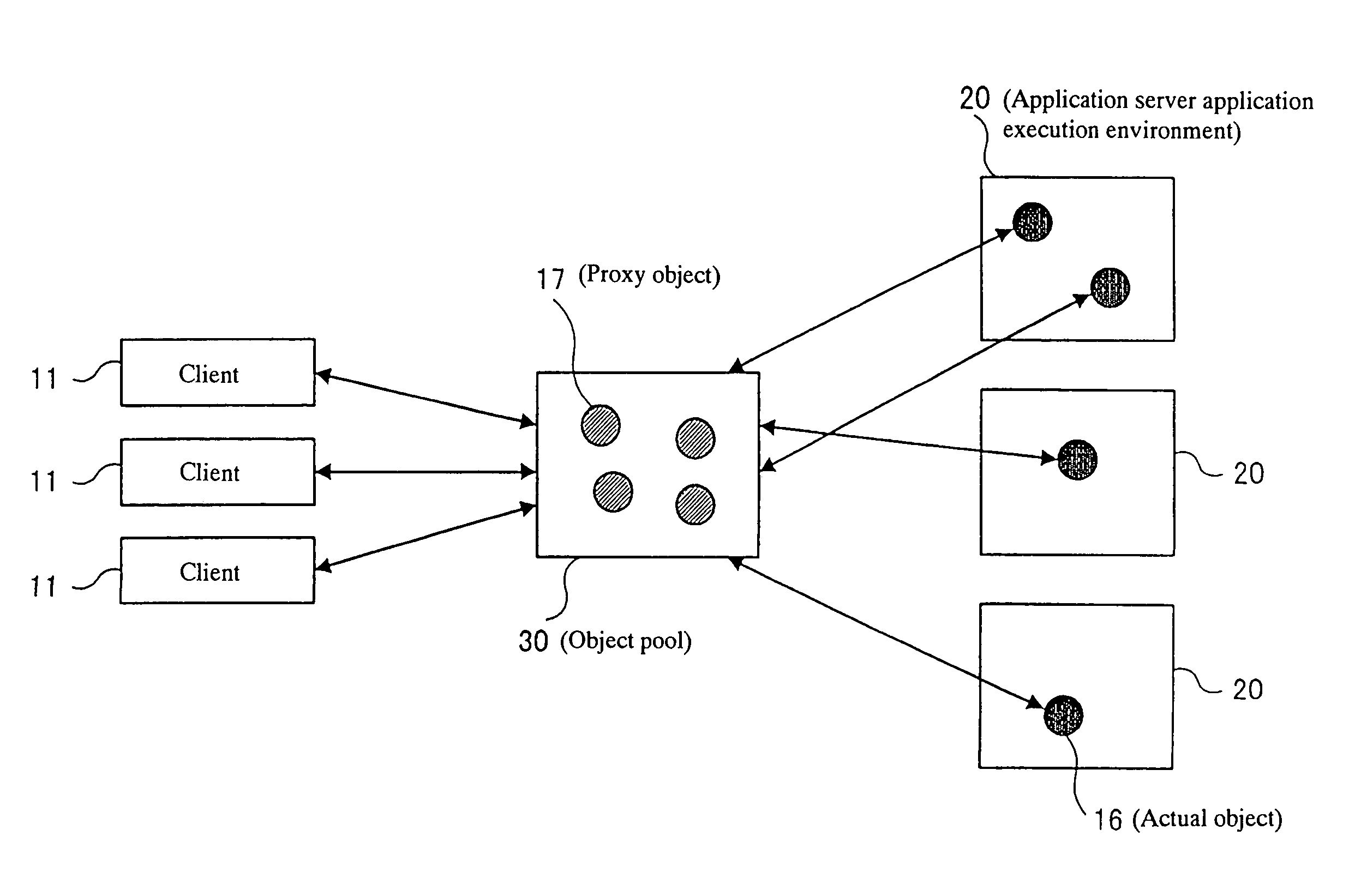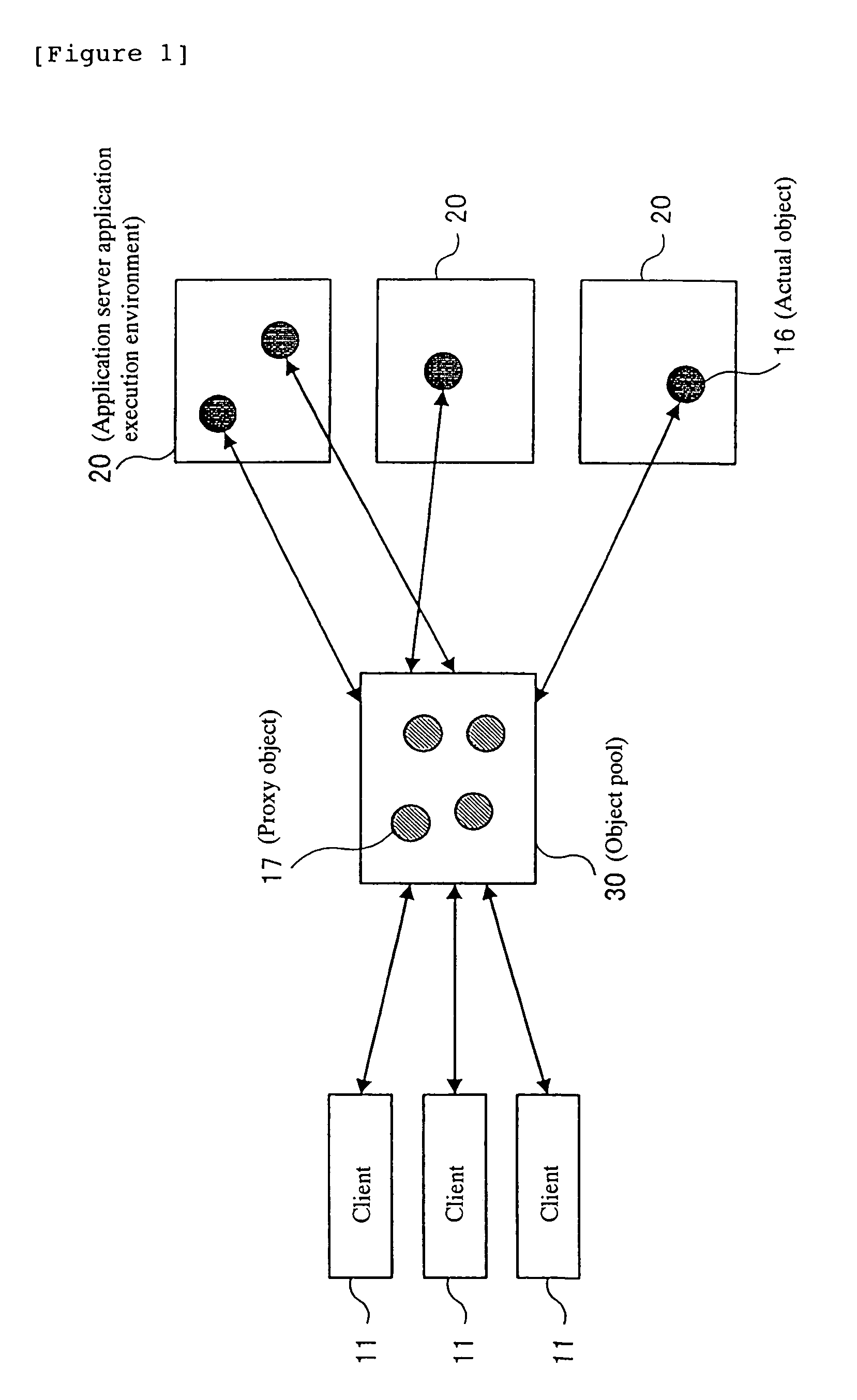Client server system and method for executing an application utilizing distributed objects
a client server and distributed object technology, applied in the client server field, can solve the problems of insufficient effect, difficult to achieve the determined response time, and the highest software cost of the object creation process, and achieve the effect of shortening the response tim
- Summary
- Abstract
- Description
- Claims
- Application Information
AI Technical Summary
Benefits of technology
Problems solved by technology
Method used
Image
Examples
embodiment 1
[0057]FIG. 1 illustrates the overall configuration of the client server system in this embodiment. In the same drawing, reference numeral 11 indicates a client, which issues various requests such as an object creation request and an object deletion request, and the client program requests execution of service by performing a method call to an object. Further, reference numeral 20 indicates an application server as an application execution environment. Reference numeral 30 is an object pool, which is connected to the client 11 via a WAN (Wide Area Network) or a LAN (Local Area Network), and is also connected to an application server 20. An actual object 16 exists in the application server 20, and a proxy object 17 is an agent object for the actual object 16 which exists in the object pool 30.
[0058]FIG. 2 illustrates a functional block of the application server 20 which is an application execution environment. The project shown in the same figure is an execution unit for a collection ...
PUM
 Login to View More
Login to View More Abstract
Description
Claims
Application Information
 Login to View More
Login to View More - R&D
- Intellectual Property
- Life Sciences
- Materials
- Tech Scout
- Unparalleled Data Quality
- Higher Quality Content
- 60% Fewer Hallucinations
Browse by: Latest US Patents, China's latest patents, Technical Efficacy Thesaurus, Application Domain, Technology Topic, Popular Technical Reports.
© 2025 PatSnap. All rights reserved.Legal|Privacy policy|Modern Slavery Act Transparency Statement|Sitemap|About US| Contact US: help@patsnap.com



